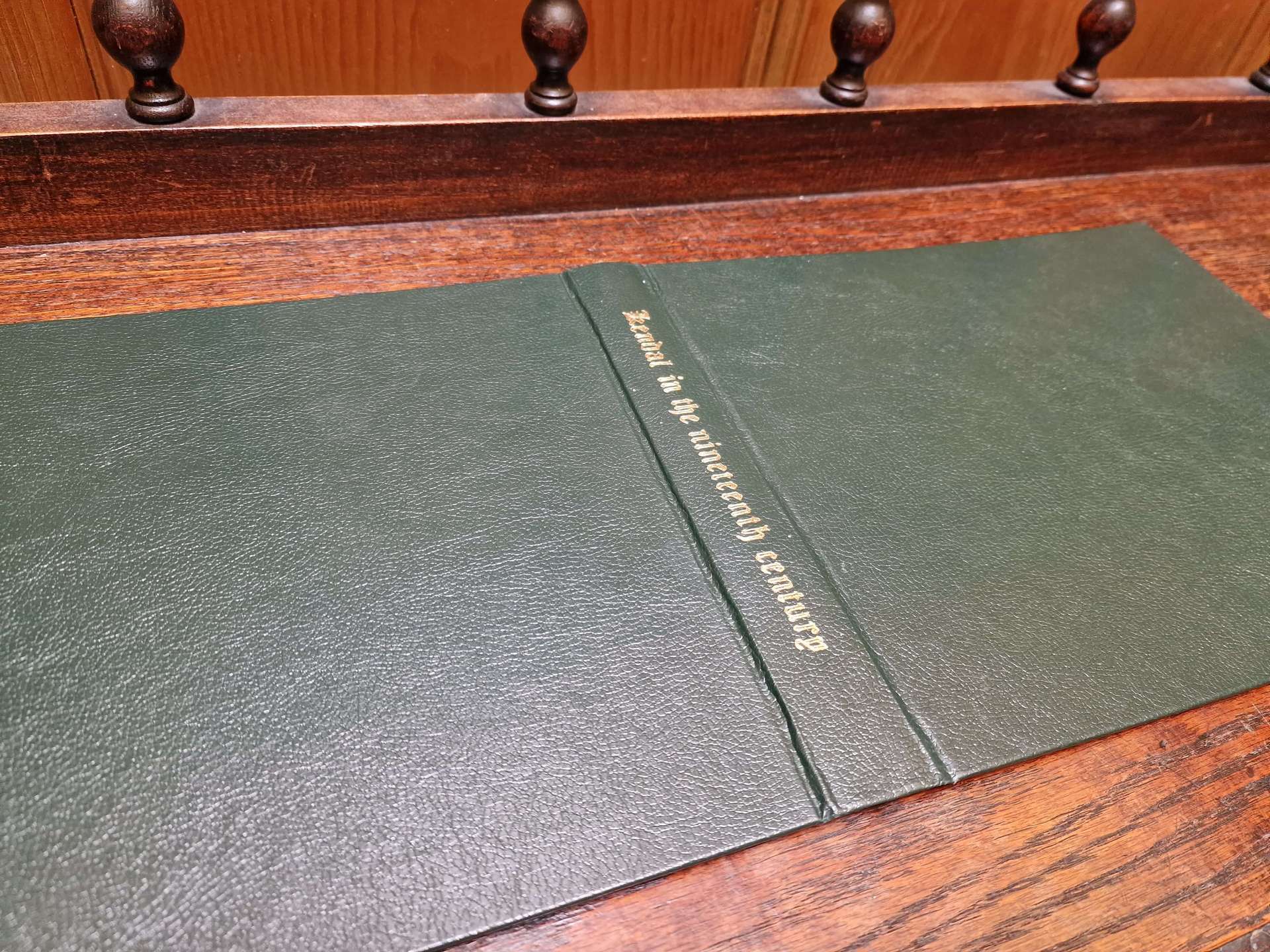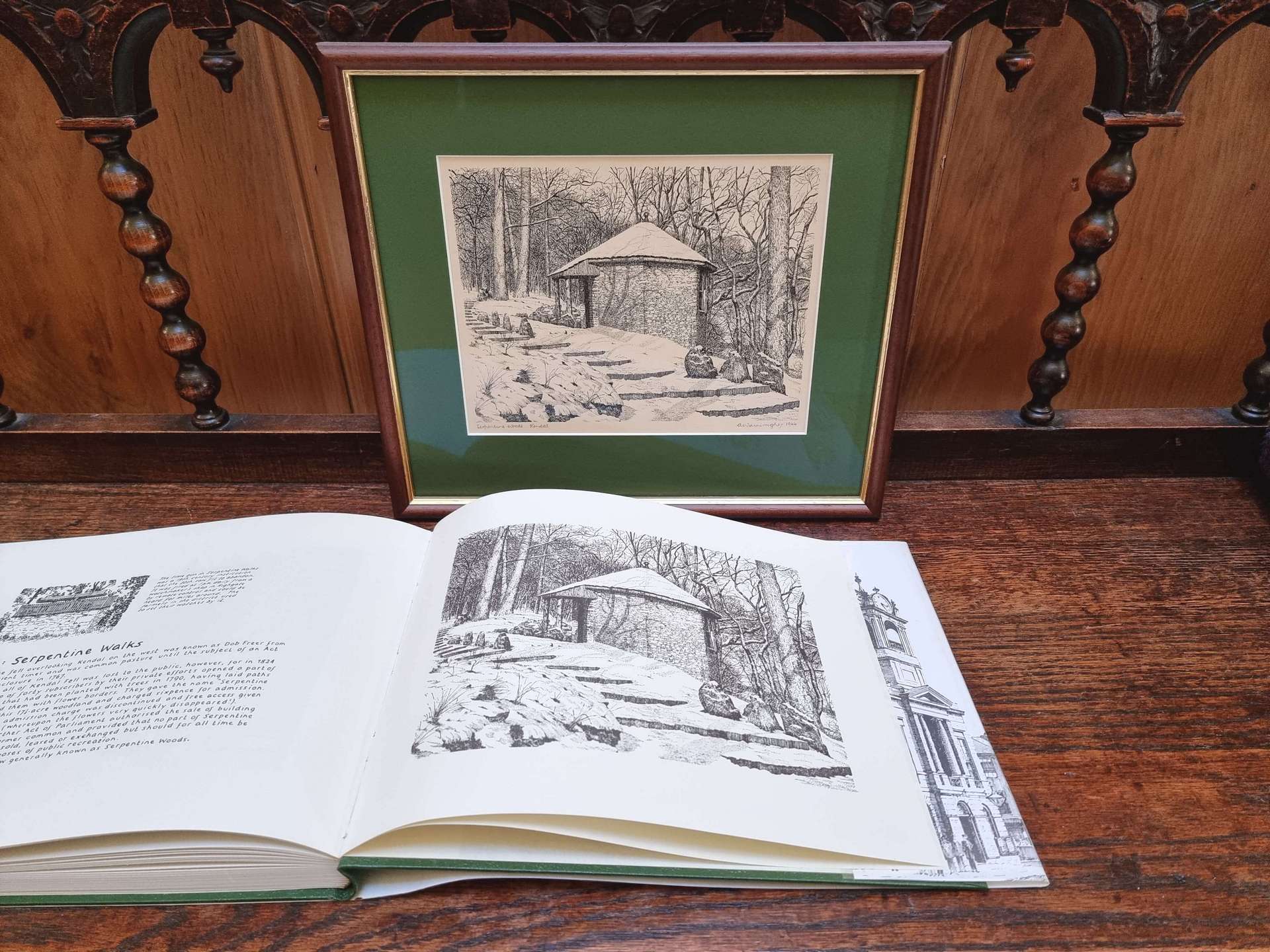Kendal in the Nineteenth Century
Kendal in the Nineteenth Century was published in 1977 and was dedicated to the memory of:
“THE FIRST MEN IN KENDAL WITH CAMERAS”
<<>>
Alfred Wainwright became the Honorary Clerk of Kendal Museum in 1942. While in charge, the museum acquired a substantial collection of old photographs taken in the late 1800s. Many of the photos were in a sorry state and required preservation. Wainwright decided to produce a series of drawings based on these photographs. He worked seven days a week on this project and produced a new drawing daily. There were over 100 drawings, more than enough for publication.
Wainwright’s tenure as the Honorary Clerk to Kendal Museum, starting in 1942, led to a fascinating project involving a substantial collection of old photographs from the late 1800s. Upon the museum acquiring these historical photographs, Wainwright recognised their cultural and historical value. However, many of these photographs were in poor condition and needed preservation.
Understanding the importance of these images and their fragile state, Wainwright embarked on a remarkable project. He decided to produce a series of drawings based on these photographs. This initiative was not just an act of artistic expression but also a means of preserving the historical scenes depicted in the photographs for future generations.
Wainwright’s dedication to this project was extraordinary. He worked tirelessly, seven days a week, creating a new drawing daily. His commitment resulted in the creation of over 100 drawings. This body of work, born out of a passion for both art and local history, provided more than enough material for publication. These drawings offer a unique window into the past, capturing the essence of the time and place in a way only Wainwright could achieve.
Photograph sources:
Kendal Museum (The Jack o’ Conner Collection).
Kendal Library (The Local Studies Collection).
Mr P.S. Duff (The Margaret Duff Collection).
Dr J. Satchell (The Kendal Civic Society Collection).
Wainwright’s project of creating drawings from old photographs involved significant historical research. For this aspect, Wainwright enlisted the help of his wife, Betty, and also brought on John Marsh, a local policeman in Kendal, to assist with investigating the historical context and stories behind the photographs.
The decision to hire John Marsh for this project was not only practical but also an act of compassion. Marsh, who was facing financial difficulties due to the needs of his two disabled children, benefited greatly from the £400 he earned through this work. This gesture exemplified Wainwright’s kindness and empathy, making a meaningful difference in Marsh’s and his family’s lives. Such acts of generosity were a testament to Wainwright’s character, leaving a lasting impression on those he helped.
The project culminated in the publication of a book in 1977, which held a special place in Wainwright’s heart. It became his favourite among all the titles he had produced, a significant statement considering his prolific and celebrated body of work. While this book may not have reached the commercial heights of his Pictorial Guides, it stood as an essential piece of local history, particularly for residents of Kendal.
<<>>
A First Edition is identified by:
- Green rexine case with gold blocking on the spine
- £5.40 price on the dust jacket







The final drawing in the book features the Summer House in Serpentine Woods, Kendal. This was an isolated photo that wasn’t part of the collection. Wainwright drew this back in 1944, appearing in A Fifth Lakeland Sketchbook and Westmorland Heritage. It would now make its third and final appearance in a Wainwright book.
Unlike many later sketchbook drawings, the early Kendal drawings were never sold to the public. Many of them were gifted to Percy Duff, who succeeded Wainwright as Borough Treasurer in 1967. These were later passed down to his sons, Mike and Paul Duff.
The inclusion of a drawing of the Summer House in Serpentine Woods, Kendal, in the final pages of this book holds a special significance as it was not originally part of the collection of old photographs that inspired the rest of the book. Instead, Wainwright created this drawing in 1944, which had already been featured in two previous publications: A Fifth Lakeland Sketchbook and Westmorland Heritage. Its appearance in this book marked its third and final inclusion in a Wainwright publication.
The early Kendal drawings, including the one of the Summer House, stand out in Wainwright’s body of work. Unlike many of his later sketches, these early drawings were not sold to the public. Instead, Wainwright gave many of them to Percy Duff, who took over his role as Borough Treasurer in 1967. This gesture highlights the close friendship between him and Percy.


Original drawings from Kendal in the Nineteenth Century are prevalent amongst enthusiasts. They are rare but occasionally show up in auctions. If you are lucky enough to own one, hold on to it.
Back to top of page

